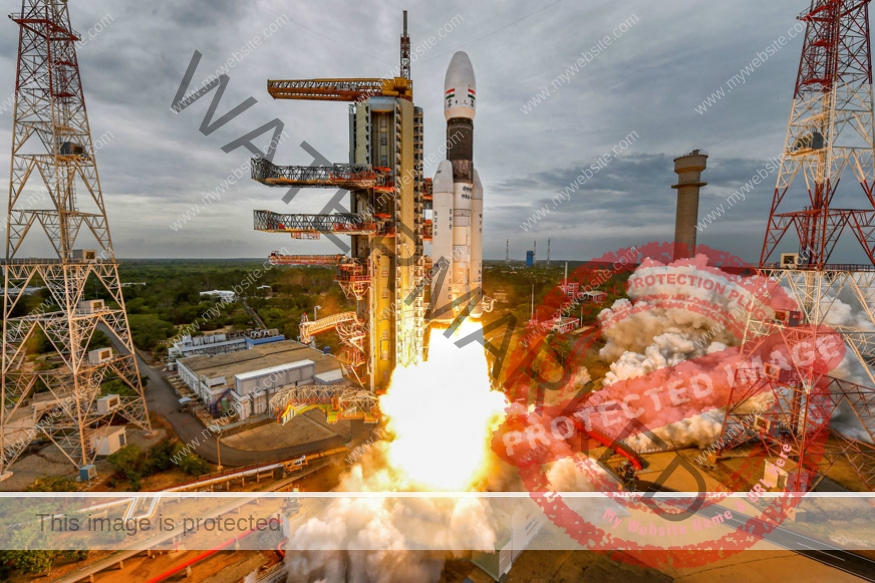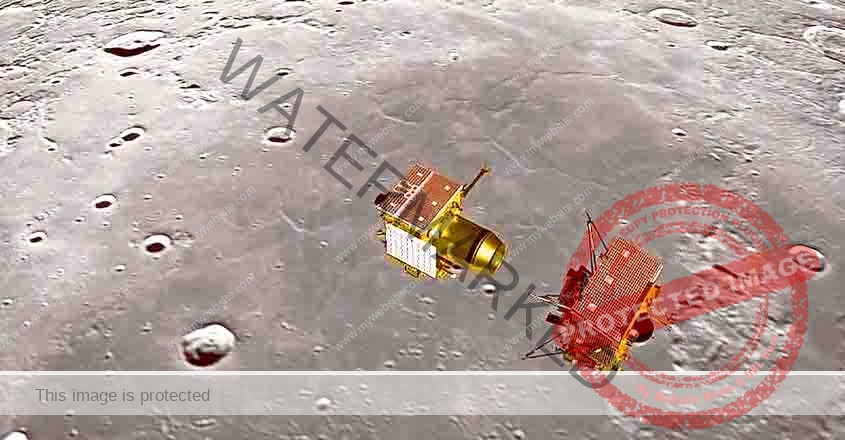India’s Ambitious Moon Mission Looks to Create History Tonight ‘Terrifying’ 15 Minutes Await Chandrayaan-2
Special Correspondent (Bengaluru): Chandrayaan-2’s landing module ‘Vikram’ can begin its final descent to drag off a historic soft landing on the satellite surface within the early hours of Saturday because the Indian area analysis Organisation awaits with bated breath for the “terrifying moment”.
A sure-fire landing can build an Asian country in the fourth country once Russia, the United States, and China to realize a soft landing on the moon. however it’ll be the primary to launch a mission to the unknown satellite South Pole.
Joined by concerning 60-70 high school students from across the country, Prime Minister Narendra Modi is a gift at the ISRO center in Bengaluru to witness live the area achievement, in keeping with officers.

‘Vikram’ with rover ‘Pragyaan’ housed within is regular for a powered-descent between one am and a pair of am on Gregorian calendar month seven, followed by its touchdown between one.30 am and a pair of.30 am. The lander is currently in associate orbit that will be concerning thirty-five metric linear unit from the satellite surface at its nearest purpose from wherever it’ll begin its final descent.
ISRO has aforesaid Chandrayaan-2 can conceive to soft-land the lander and rover in a very high plain between 2 craters, Manzinus C and Simpelius N, at a latitude of concerning seventy south. ISRO Chairman K Jewish calendar month aforesaid the planned soft landing on the Moon was about to be a “terrifying” moment because the ISRO has not done it before, wherever as satellite Orbit Insertion (LOI) maneuver was with success administrated throughout the Chandrayaan-1 mission.
Explaining the landing maneuvers, Jewish calendar month had aforesaid once the maneuver starts from concerning thirty metric linear units to land on the surface of the moon, it’ll take quarter-hour. “This quarter-hour travel of lander is new ISRO. it’s for the primary time we have a tendency to are about to another body wherever there’s no atmosphere and victimization the system we’ll need to break the speed and produce the vehicle safely to soft-land.
To achieve this we’ll need to balance between the gravity and thrust. therefore we’ve got to modulate the thrust of the engine,” he had aforesaid. Following the landing, the rover ‘Pragyaan’ can roll out from ‘Vikram’ between 5.30 am and 4.30 am.
While the ‘Pragyaan’ can perform experiments on the satellite surface for an amount of 1 day, that is capable fourteen earth days, the most artificial satellite can continue its mission for a year. The lander and rover carry the country’s symbols on them, which can stay on the moon for long.
“The rover has six wheels (three every on each side), the rear 2 wheels- one has Ashoka Chakra thereon and also the alternative has ISRO emblem. Also, the ramp of the lander on that rover can take off and land on moon has Indian flag thereon,” Siwan had earlier same.
The Rs 978 large integer unmanned moon mission (satellite value Rs 603 large integer, GSLV MK III value Rs 375 crore) is predicted to shed light-weight on a totally undiscovered section of the Moon — its South Polar region.
Pointing out that Chandrayaan two was reaching to pole, an area wherever no one else has gone, ISRO Chairman K Siwan had same, the whole scientific community of the state and also the globe were thirstily expecting the mission.
According to ISRO, the satellite pole is very fascinating thanks to the satellite expanse here that is still in shadow is way larger than that at the North Pole and there was an opening of the presence of water in for good shady areas around it.

In addition, the pole region had craters that area unit “cold traps” and contain a fossil record of the first scheme. India’s fixed Satellite Launch Vehicle, GSLV MkIII-M1 had with success launched the three,840-kg Chandrayaan-2 ballistic capsule into the earth’s orbit on Gregorian calendar month twenty-two.
Chandrayaan-2 satellite began its journey towards the moon departure the earth’s orbit within the dark hours on August fourteen, once a vital maneuver known as Trans satellite Insertion (TLI) that was meted out by ISRO to put the ballistic capsule on “Lunar Transfer Trajectory”.
The ballistic capsule with success entered the satellite orbit on August twenty by playacting satellite Orbit Insertion (LOI) maneuver. On Sep two, the lander ‘Vikram’ with success separated from the artificial satellite, following that 2 de-orbiting maneuvers were performed to bring the lander nearer to the Moon.
The health of the ballistic capsule is being unendingly monitored from the Mission Operations advanced (MOX) at ISRO measuring, chase and Command Network (ISTRAC) in Bengaluru with support from Indian part Network (IDSN) antennas at Bylalu, close to Bengaluru.
The artificial satellite carries eight scientific payloads for mapping the satellite surface and study the layer (outer atmosphere) of the Moon whereas the lander carries 3 scientific payloads to conduct surface and submerged science experiments.
The rover carries 2 payloads to reinforce the understanding of the satellite surface. The rover is sport on the moon around its own propulsion at the speed of 1 cm per second and can cowl five hundred meters in its time period.
According to ISRO, the mission objective of Chandrayaan-2 is to develop and demonstrate the key technologies for end-to-end satellite mission capability, as well as soft-landing and roving on the satellite surface.




